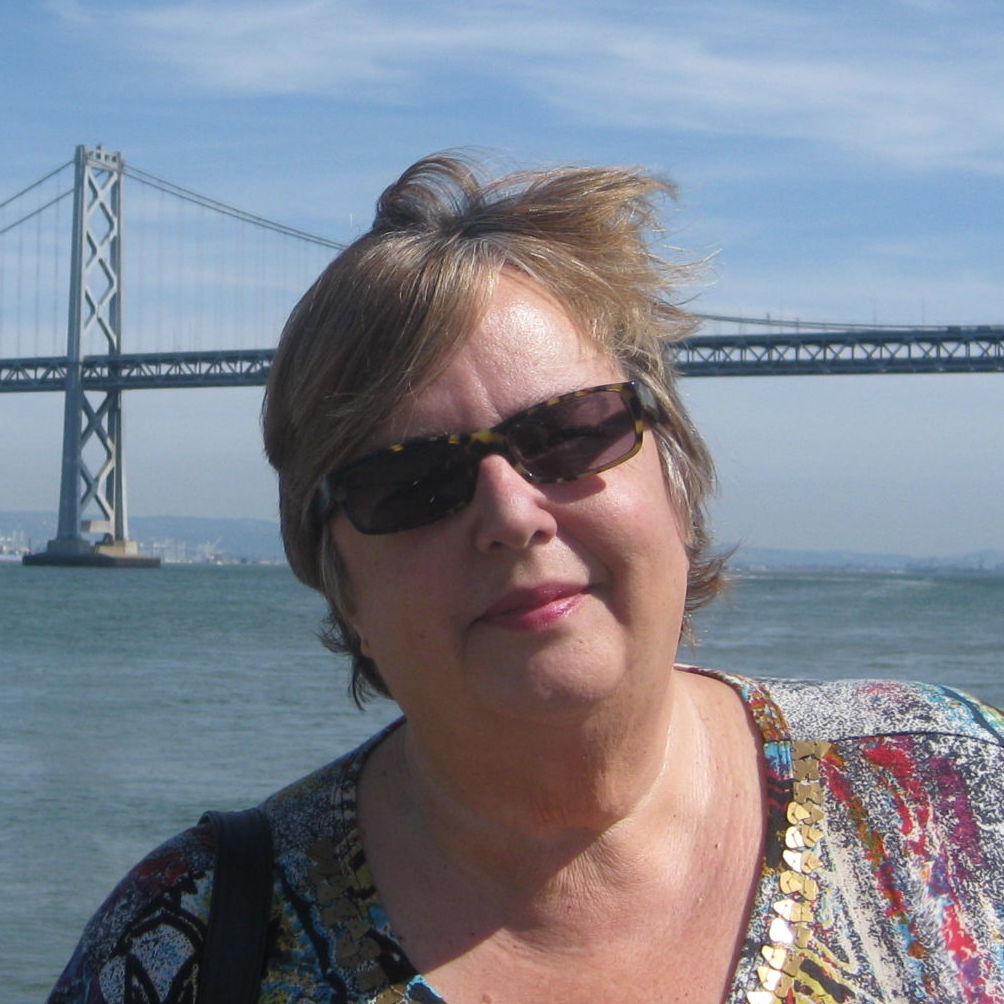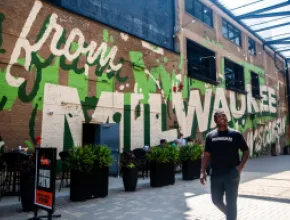While extreme skateboarding has not yet replaced golf or spa treatments as the favorite incentive trip activity, it may only be a matter of time. Increasingly, planners are finding that just about every aspect of an incentive meeting—from promotion to team building to the closing-night bash—is feeling the influence of an emerging generation of young qualifiers with their own set of preferences and priorities.
At the same time, incentive programs also need to respond to other shifting dynamics, such as the increasing number of people working in home offices or other remote locations. And what kind of incentives work best in an environment where people are more digitally connected to their workplace than ever before?
To get an idea of how the incentive industry is stepping up to these challenges, Meetings West sought the perspective of veteran incentive planners, along with travel technology consultant Richard Eastman and demographics expert Maddy Dychtwald.
First of all, what should planners be aware of when considering the different needs of younger incentive qualifiers? Why are their demands different from their elders?
Richard Eastman, president, The Eastman Group, Newport Beach, Calif.: There are huge differences between the generations now, primarily because of technology. The senior managers running most companies grew up during a time when research was done in libraries. They gathered data on paper.
The generation coming up in business has always had computers and nearly always had cell phones, PDAs and other forms of instant communication. They are used to instant gratification and they expect it.
So for younger people, travel incentives work best that let them do what they want when they want to do it. They need choice.
Nola Conway, president, LMS Meetings & Incentives, Culver City, Calif.: We have found that flexibility and independence are key. Younger qualifiers want a minimum of hosted activities with maximum time to explore and do as much, or as little, as they please. We’re finding that dine-arounds are getting more popular than events at off-site venues. Gift certificates for different restaurants are very popular.
Mary MacGregor, general manager-business development, MotivAction, Minneapolis: We know changes are coming and we are planning for them. We’re already seeing a demand for more choice. Choice is important because the Internet has created a scenario where travelers are much more informed. You can easily find things about a destination that are uniquely appealing to you—and as a result, people want these things.
At the same time, people are working a lot these days. And you have worked hard to earn that incentive, so you want to choose the activities that are relevant for you.
Susan Alpert, president, International Travel Incentives, Santa Ana, Calif.: The biggest difference now is that people are much more savvy about the world and about destinations because of the Internet. So as a planner, you really have to get on the Web yourself and do a lot of research. You can’t just rely on a single source if you want to keep a step ahead of your clients.
Sandy Amorde, president, Amorde Incentive Marketing, San Juan Capistrano, Calif.: You have to be creative with these young qualifiers. You cannot do the same old, same old. What has not changed is that incentives have to meet and exceed expectations. The surprise element is always important.
Bill Boyd, president, Sunbelt Motivation & Travel, Dallas: The younger generation still enjoys group activities, but has a greater yen for individual activities. Programs now include many more activity choices, most of those choices geared to adventure or challenge. The younger generation is tending to spend more time alone with their families, as opposed to being with groups.
Maddy Dychtwald, senior vice president, AgeWave, San Francisco: Life balance is very important to younger people. They want things that improve their lives and their resumes. They are very independent and view their career paths as not dependent on any one company. They also want a lot of feedback all the time. The yearly performance review is not enough.
Team-building activities should give people the chance to strip the work mask away and be real people. Baby Boomers value this, and so do younger people. For young people, the weak link is face-to-face communication. This is something important that companies need to look at.
If individual choice is becoming so important, is the group trip still effective?
Conway: It does still work, but we need to be tuned into the individual’s needs and desires. We also request a participant profile from our clients, including average age and income bracket, to assist us in the planning stages of a program. Customized programs designed to fit the participants’ needs are a must to achieve maximum motivational results.
MacGregor: There’s not been a departure from the group trip, it’s just being structured differently to allow for more choice. The group incentive still provides the trophy value and a level of recognition that is very desirable. Then there’s the access to top executives that you don’t get everyday. Spending time with top executives is still very important to attendees. And, of course, the group incentive is a way for companies to reinforce their message.
How are younger qualifiers influencing incentive activity choices?
Conway: We’re finding that we really have to push the envelope on adventure-based activities. Spa is still the No. 1 activity, but it is now followed closely by extreme sports like bungee jumping. Team building has become more athletic, more extreme, more ambitious. People want to come home with stories of what they did.
Alison McNeice, president, Genesis Incentives, Tustin, Calif.: Young people definitely want more adventurous activities. For example, on a recent Puerto Vallarta trip, the client initially wanted to go with golf and spa. But when they saw they could do zip-lining, the whole group wanted to do that.
When there is a mix of generations, the younger people are leading the way on activity choices. Older people don’t want to appear to be old and out of step. So younger people are influencing them to go for more adventure.
Amorde: Technology is important to younger qualifiers, so choosing a venue that has video games is very popular. Places like Hard Rock Cafe and Dave & Busters have them, so they can be combined with a dinner event.
MacGregor: Younger people view the chance to get ahead in their profession as a perk, so they want an educational/professional development element in the incentive. The “pure” incentive that does not include a business element is much less prevalent now.
How about destination choices?
McNeice: Younger people are more willing to go for destinations that might not have been considered a few years ago—more adventurous and exotic places like India and Dubai. Costa Rica is about as popular as Mexico now.
Mountain destinations are big because of the activity choices.
We’re also seeing interest in destinations that are big on spirituality and wellness, such as Sedona. It goes beyond the spa—young people are very concerned with their well-being.
MacGregor: Increasingly, destinations are chosen because of their quick accessibility factor. Companies are still very cost-conscious, and there is a concern about keeping people out in the field too long or away from their families. So incentive trips have to be shorter; the five- to seven-night trip of 10 years ago is now the four- or five-night trip.
Is there now more of a demand to take family along on incentive trips?
MacGregor: We’re definitely seeing more requests for this. It’s getting close to surpassing the couples-only trip. For one client, we offer a choice of group trips where participants can either take a couples-only trip or do a trip for four. The budget is the same for both, so the couples trip is higher-end.
Eastman: People really vie to take their families along. When you’re working 24/7, and you’re connected all the time, family time becomes all the more important.
Conway: Increasingly, companies are offering family-friendly incentives. They will either pay for the kids or offer a special rate for them. Family incentives are a very big motivation for younger qualifiers, who often sacrifice family time to make sales goals. It also helps to foster relationships within the company when they observe each other’s family life and their children become friends.
For us, it means that we need to see that the hotels offer children’s programs, not just babysitting. If the hotel doesn’t have these programs, we create them ourselves.
Gwenna Brush, president, Maxcel Co., Dallas: Very few requests are coming in to bring the kids along. For many of our clients, who tend to be in high-pressure fields such as pharmaceuticals, the incentive is their vacation and their chance to get away from the kids.
Has the fact that more people are working from home these days had an impact on how incentives are planned?
Brush: It has definitely caused a need for more promotion of the program. People working in the office have much more of a chance to communicate and talk with each other about the incentive. People at home don’t have this opportunity, so we’ve stepped up our mailings and other promotional efforts.
Boyd: It is my belief, backed up by some research, that individuals who work from home lose a bit of the corporate culture and often feel disconnected to company goals and vision. Group incentive travel helps to mend that rift and bring those individuals back or closer to the company philosophy.
Are changing preferences and demographics posing any particular challenges for incentive planners and their clients?
Amorde: A big challenge is that people are glued to their cell phones. It’s hard to get them off them. Or they are working so much that they can’t leave the job behind. They are constantly checking their e-mail. An even bigger problem is that people are on such a fast track that they can’t get away from work to attend the incentive.
MacGregor: With more call for adventure and high-risk activities, companies are being challenged with liability issues. You want to provide choices that people want, but you have to consider the consequences.
Do incentive programs need to be promoted differently these days?
Conway: Forget about paper and mailings. A lot of work now goes into electronic promotion. We use e-mail blasts and customized online registration. We use a lot of graphics—pictures of the dine-around restaurants, the activities, the hotel. It allows for the capture of data and it’s motivational as well.






